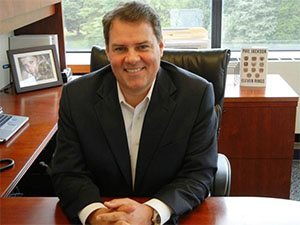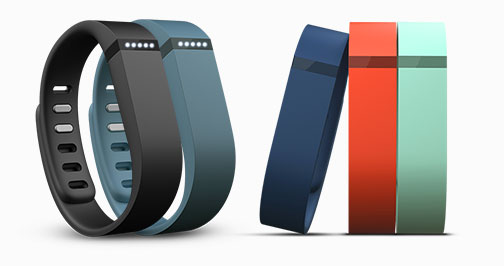It was an IPO to remember when Fitbit, Inc. hit Wall Street this June. In fact, it was the third largest U.S IPO of 2015, according to Dealogic. Its stock opened at $30.50, (52 percent above its initial public offering price of $20.00), raised $732 million, and sold 36.6 million shares—giving the San Francisco, CA-based, fitness-tracking device developer a valuation of approximately $4.1 billion.
Clearly it was a great day for Fitbit, but what does its initial success say about the long-term viability of the wearables market and its future prevalence and persuasion in the healthcare industry? To find out, we turned to Andrew Flanagan. He is a 25-year healthcare veteran and CEO of Telcare, the Bethesda, MD-based provider of the world’s first cellular-enabled blood glucometer, diabetes mobile application and comprehensive HIPAA compliant cloud platform.
With an eye on the industry and wearable on his wrist, Flanagan’s perspective on what Fitbit’s early success in the market means for future of wearables is interesting, especially when it comes to the value then fitness trackers could hold for population health management:
Q

Fitbit’s IPO was strong and shares skyrocketed. Behind that surge has to be a lot of confidence in the future of wearables. What do you think Fitbit’s successful IPO says about the future of wearables in healthcare?
Fitbit’s spectacular success is very promising for the future of wearables in healthcare. As a mobile health leader with massive consumer success, the company is proving that there’s a connection between traditional healthcare and self-engagement in one’s health. I think that the company’s commercial viability bodes well for a continued evolution of wearable technology that can aid patients, physicians, health systems, and health plans alike.
Q
Naturally Fitbit’s CEO, James Park is pretty tight lipped about how the stellar IPO will shape the future of the company: he stated that the company will continue to grow its multimillion dollar research department. Still, what do you think this means for the company and its competitors? What do you think is next on the drawing board for wearable companies?
Fitbit’s spectacular success is based on them constantly improving what they do everyday – and that’s producing a world-class, consumer-oriented wearable. As Fitbit continues to do just that, the entire market for wearables is just beginning. With its surge in new funding, Fitbit will continue what they’ve been doing. They will develop more devices that do more for healthcare, and start to innovate in use cases and areas that they previously couldn’t afford to touch. I see a particular opportunity for the wearable health industry in combination devices, and that’s where I predict the market will go next.
Q
According to one market study, a third of activity monitor owners quit using fitness devices within the first six months of purchase. With that in mind, is the market banking too heavily on a level of consumer buy-in that doesn’t currently exist? What’s really driving the evolution here, is it consumer-expectation or innovation?
The main reason people stop using their fitness devices so soon after purchase are because their device doesn’t do enough for them. Consumers’ expectations for what their technology can do for them run a little deeper, which is why a good number stop using devices after a short period of time. The actionable data that devices can measure and create a feedback loop, do, however, carry with it the opportunity to stick over a long-term period. Once devices can do a little more than just record cosmetic health metrics, consumers will begin to see the value of using wearables over an extended period.
As an example, I wear a Fitbit Charge HR on my wrist everyday, which I bought because of the heart-rate tracking ability. Before that, I had a regular Fitbit. There was nothing wrong my original device or the mobile app, but the heart-rate monitor showed me the true value in using the device everyday to engage with my own health conditions.
My own user experience with Fitbit is indicative of the direction where I see wearables heading. Consumer demand will drive the wearables industry to become more healthcare-focused, and in order to maintain material growth rates, wearables companies will need to figure out how to more meaningfully contribute to the care ecosystem.
Q
The consensus seems to be that wearables’ survival rests on further development into a more comprehensive use for monitoring and managing health. Your company Telcare recently conducted a survey that revealed 88% of Americans want access to real-time data when managing chronic disease. How has that shaped what you are doing at Telcare? Furthermore, how do you think that insight should be taken into consideration from wearable companies like Fitbit when it comes to continued product development?
At Telcare, we’re a “medical device meets enterprise software” company. This primarily means that as we continue to roll out our FDA-cleared, cellular-enabled blood glucose meter to enterprise customers like hospitals and health plans, we’re continuing on a path to not just collect our users’ data, but also growing and evolving health data at scale. As our data continues to enlighten the development of more sophisticated healthcare offerings, consumer products will allow for further innovation as well. It’s important to note that when wearables companies like Fitbit begin to cross into the intersection of true care delivery, FDA regulation will be expected at some point in the process. FDA clearance on connected consumer health devices will usher in a new generation of health that will contribute to patient treatment in a clinical setting.
Q
Given the work you do at Telcare, do you think disease management is the most important area wearables can enter to improve health? If so why? Aside from diabetes, how do you see the incorporation of wearable technology aiding a consumer in monitoring or managing their health conditions beyond fitness?
Telcare’s purpose is to help people with diabetes manage their conditions using our technology and to help them on a path to a healthier life. That said, 80% of the 29 million Americans with diabetes also suffer from a second chronic condition. Once healthcare technology platforms are designed to collect comprehensive health data from patients, ranging from blood glucose levels to blood pressure and weight, I am hopeful that mobile health devices and other apps will begin solving the problem of treatment for diseases and additional chronic conditions.

